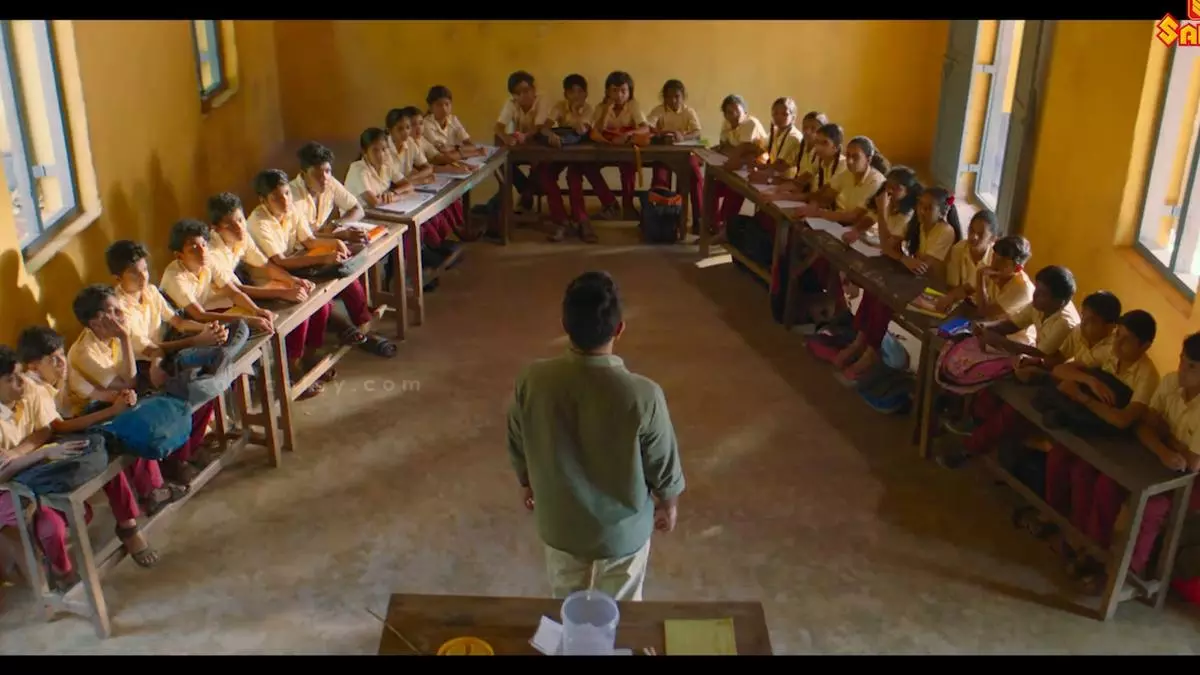
Kerala schools to eliminate backbenches with film-inspired seating plan
text_fieldsKollam: Ramavilasom Vocational Higher Secondary School (RVHSS) in Valakom, Kollam, Kerala, already proud of its academic laurels, has now gained national attention for an innovative step in educational reform — a new seating arrangement that removes the concept of “backbenchers” altogether.
At the school gate stands a tribute to alumna G P Nandana, who secured second rank in Kerala and 47th nationally in the Civil Services Examinations. But RVHSS’s latest claim to fame is not only academic excellence — it’s a bold and inclusive approach to classroom design.
Inspired by a scene from the recently released Malayalam film 'Sthanarthi Sreekuttan', the school has implemented a seating plan where desks are aligned along all four walls of the classroom, ensuring that every student is, in effect, sitting on the “front bench.” This allows teachers to offer equal attention to each child and removes the stigma often associated with sitting at the back of the class.
The idea depicted briefly in the film came from a seventh standard student character, who proposed the arrangement after being insulted for sitting at the back. What was intended as a simple plot detail has now sparked a real-life movement.
“This concept wasn’t invented by us,” said Vinesh Viswanathan, director of 'Sthanarthi Sreekuttan'. “In fact, such seating models were once part of the District Primary Education Programme (DPEP), but we lost track of them over time.”
Viswanathan expressed surprise and pride that the idea has caught on in real schools. “I received a message that a school in Punjab has implemented this after the principal watched the movie on an OTT platform. He even screened the film for the students. I never expected such a response. It’s heartening to see it gaining national traction,” he said.
The introduction of this model at RVHSS was the result of early discussions initiated by Minister K B Ganesh Kumar, whose family runs the school. Ganesh Kumar viewed a preview of the film a year before its release and discussed the idea with his wife, who helps manage the school, and the teaching staff.
“Initially, we decided to implement it in just one class. The results were so positive that we soon extended it to all lower primary classes,” said Sunil P Sekhar, Headmaster of RVHSS.
Sekhar noted that the change has allowed teachers to engage better with students, enabling them to monitor the classroom more effectively and ensuring that no child is overlooked. “It eliminates the idea of backbenchers and brings every child to the forefront. Many more schools have shown interest in adopting this model,” he added.
Meera, a lower primary teacher with 29 years of experience, said the arrangement has transformed her teaching. “I’m now able to attend to each student more closely. The children are also happier — they can see every classmate’s face and are more focused on the teacher.”
Teachers also point out that this system mirrors classroom practices in countries like Finland and Norway, where lower student-teacher ratios and child-centric learning models are common.
However, the idea has not been without its critics. Vinesh Viswanath acknowledged some backlash on social media, particularly from senior students on the X platform, who questioned the feasibility of such a layout in overcrowded classrooms. “Some said they have 80 students in a class and wondered how this could work. But such overcrowding is itself a violation of existing education norms, and authorities are addressing those cases,” he said.
Prominent industrialist Anand Mahindra also tweeted his support for the initiative, calling it a welcome move, even though he personally enjoys the idea of backbenchers and what they represent.
So far, eight schools in Kerala have adopted the seating model, with interest growing across the country. What began as a fictional moment on screen is now reshaping the classroom experience in reality, bringing all students, quite literally, to the front.
With PTI inputs








